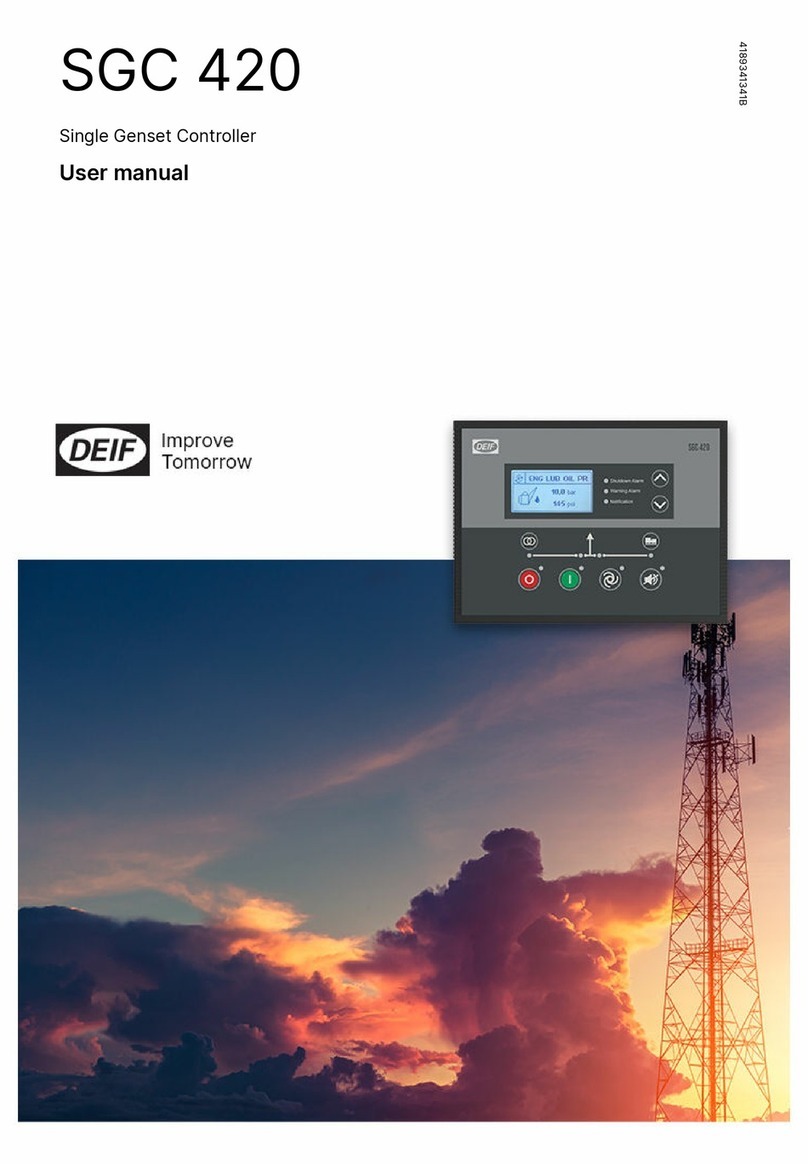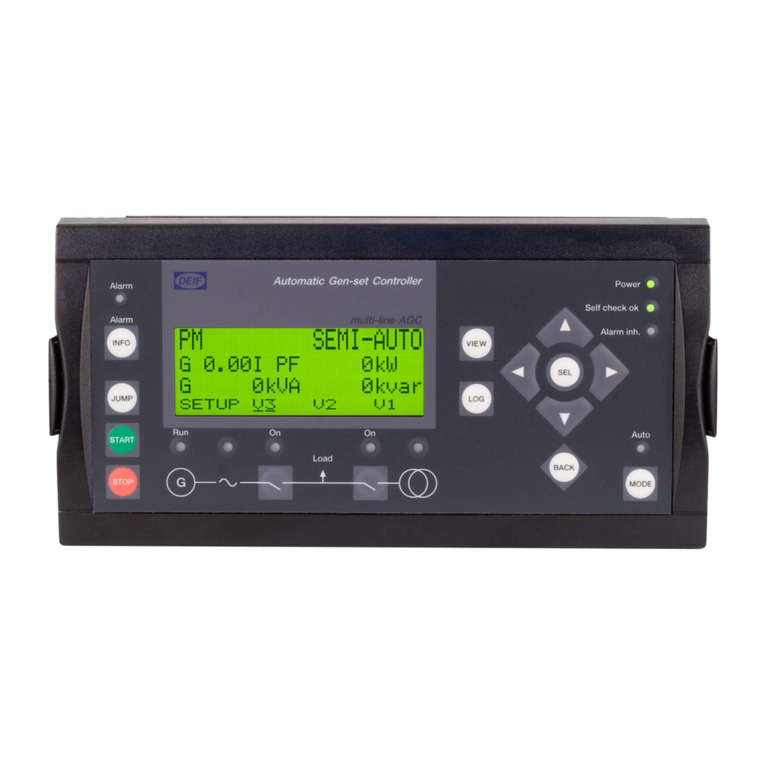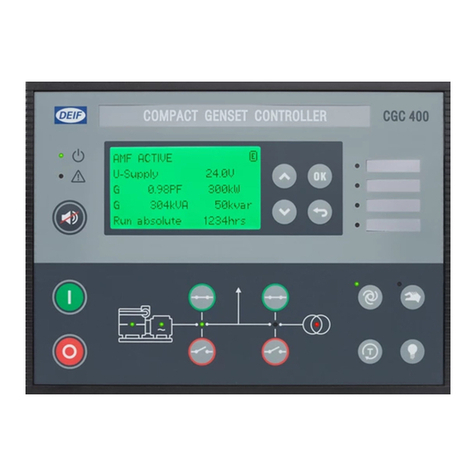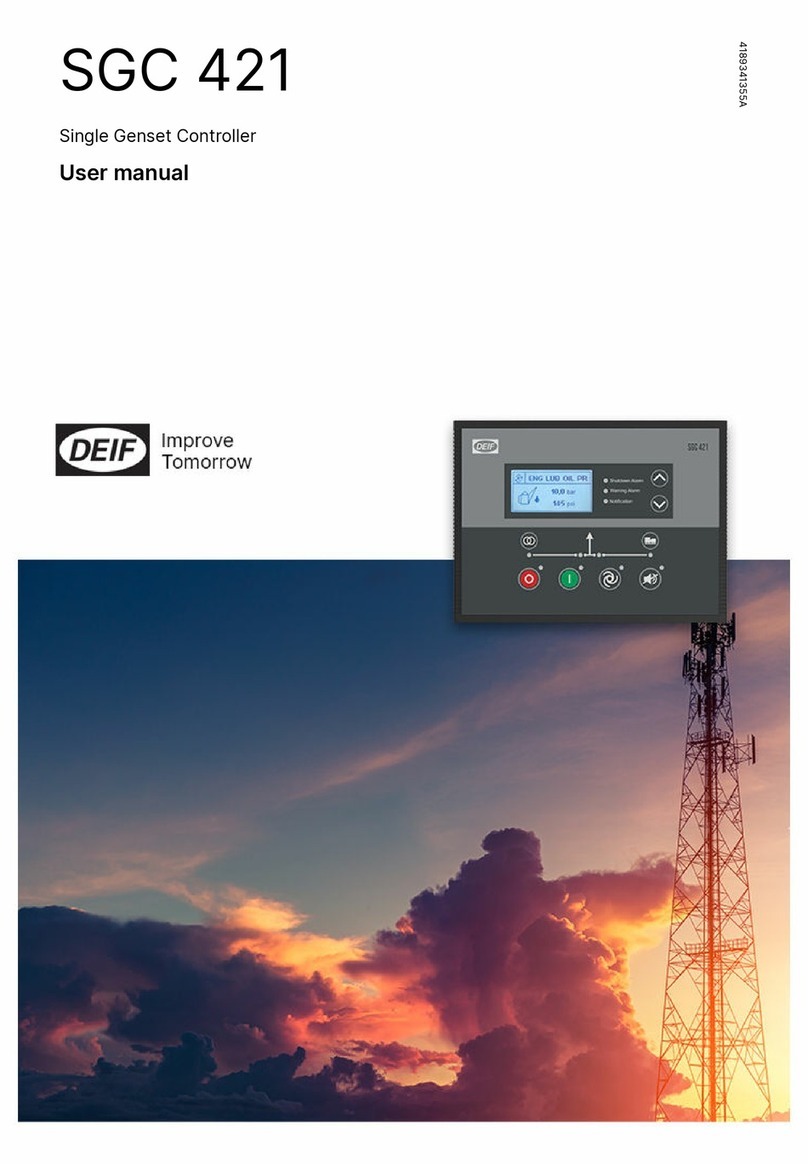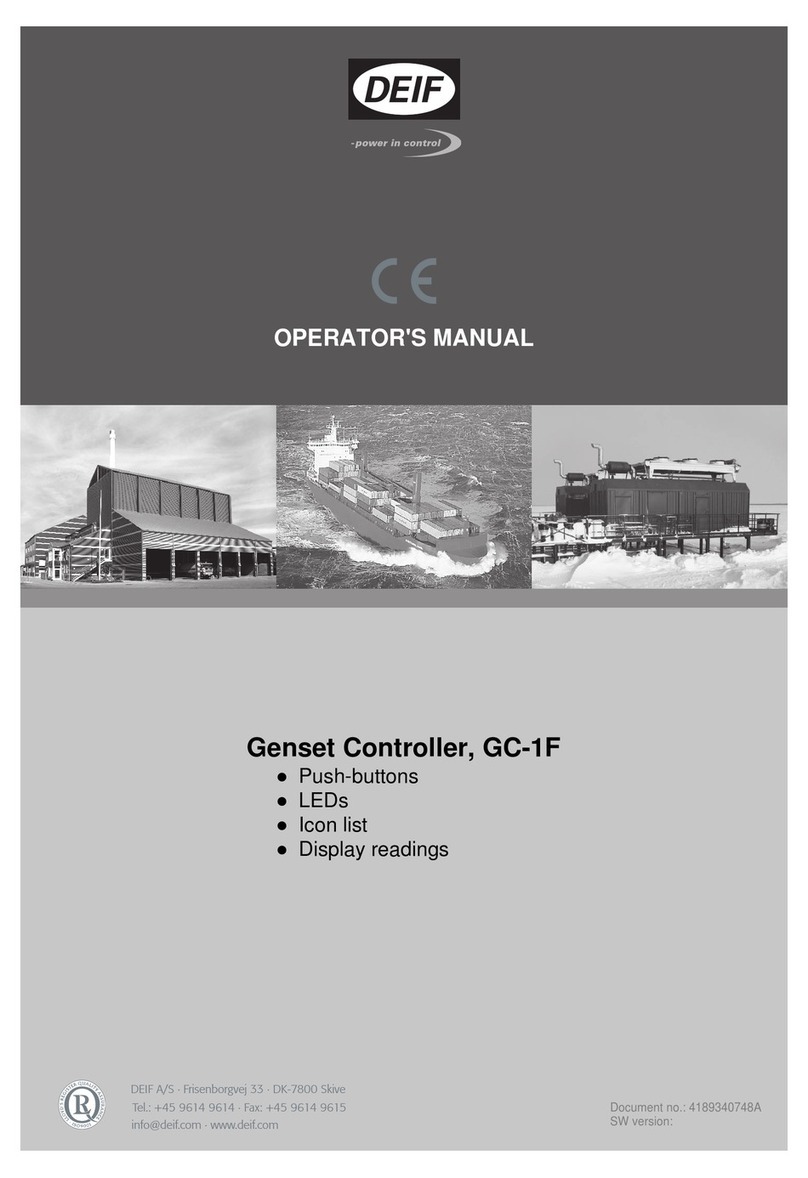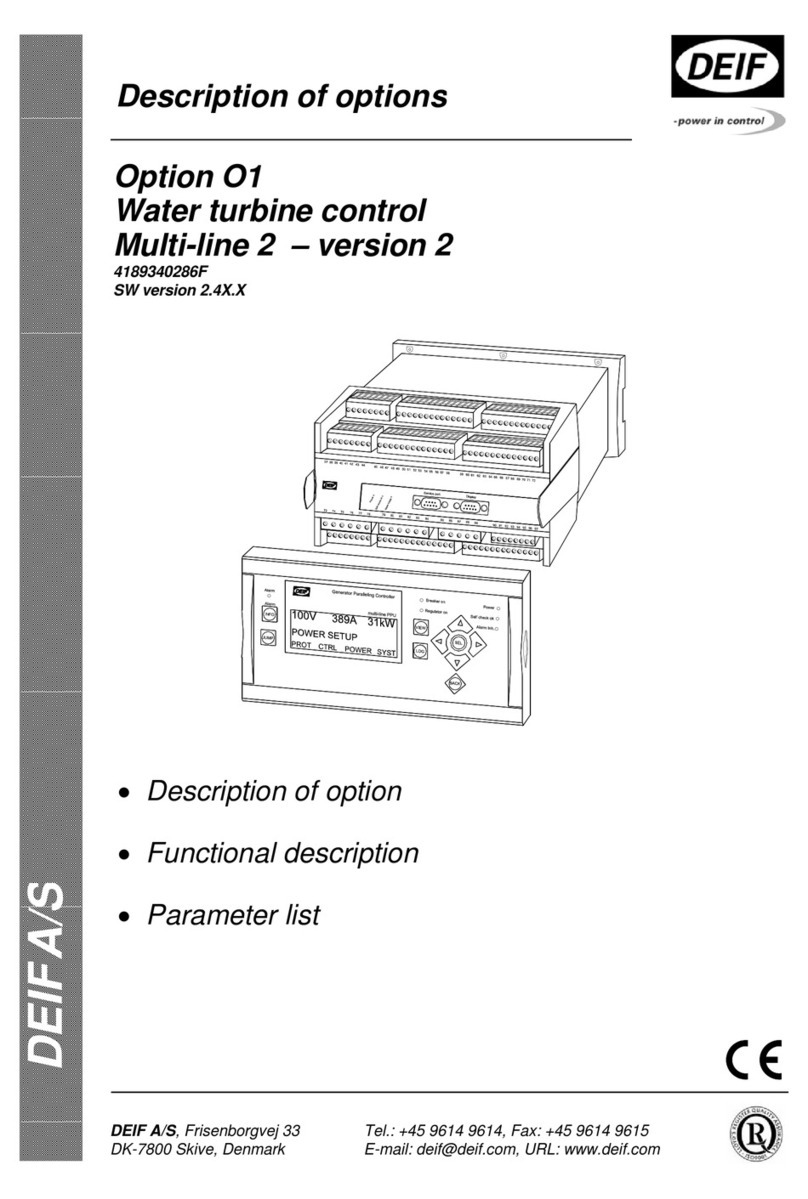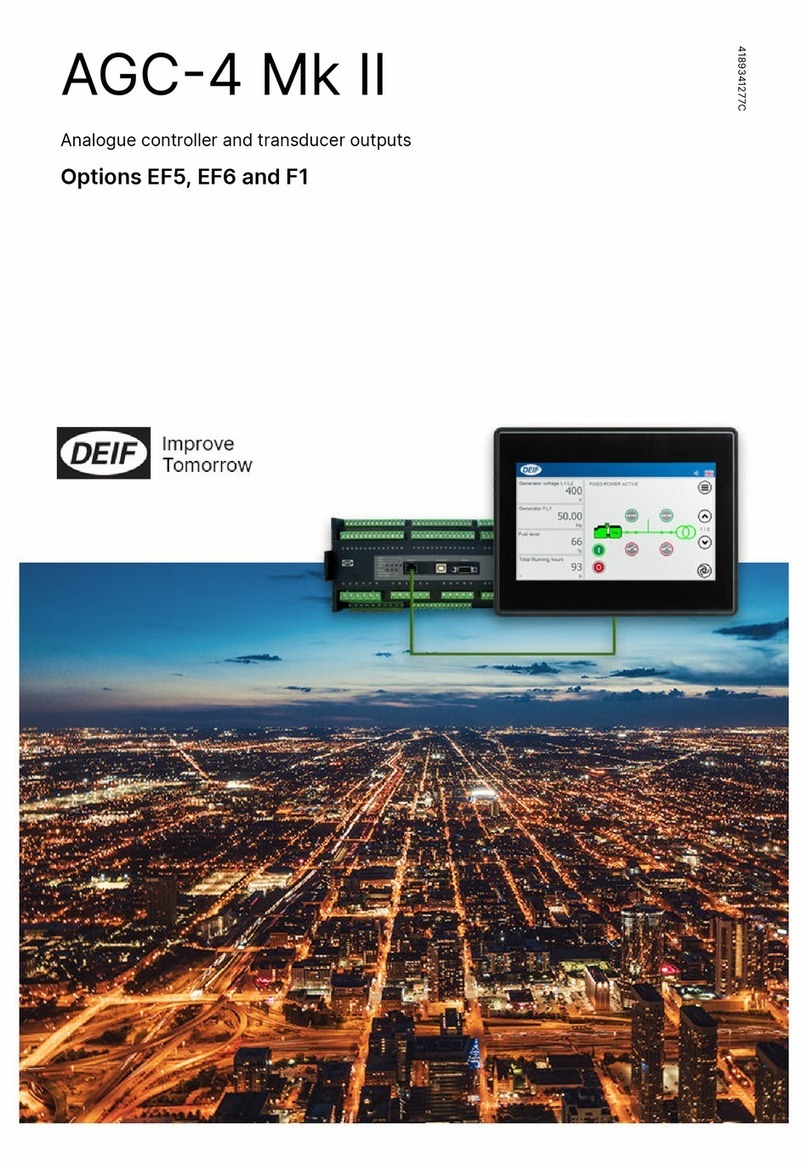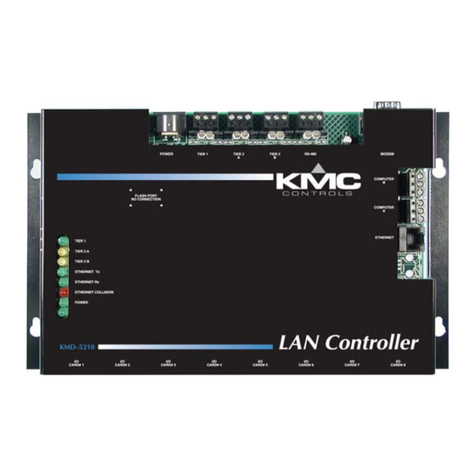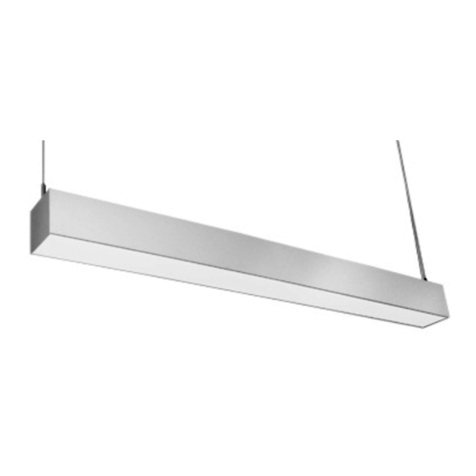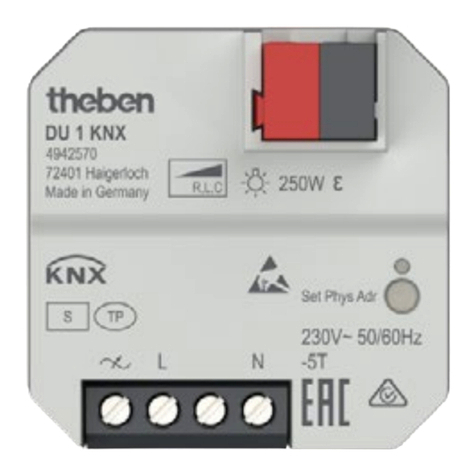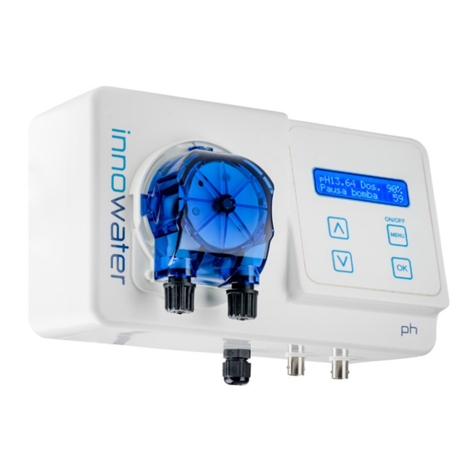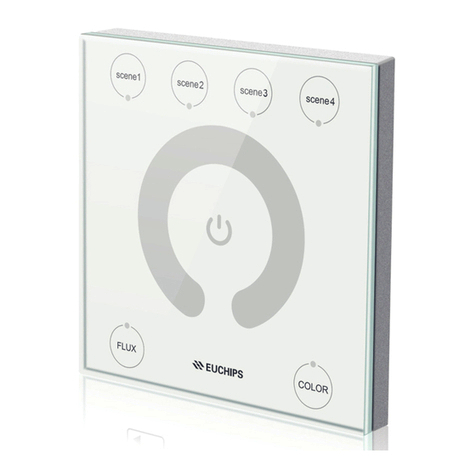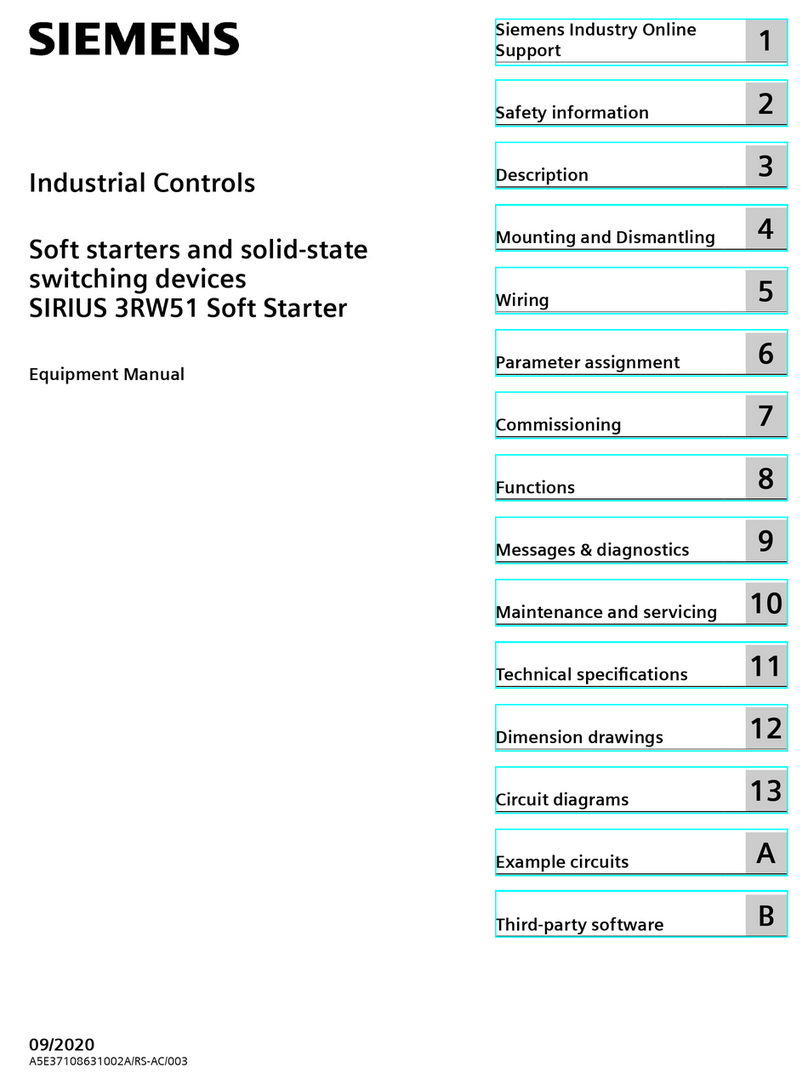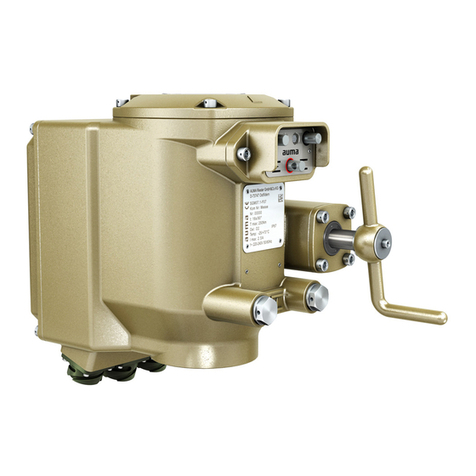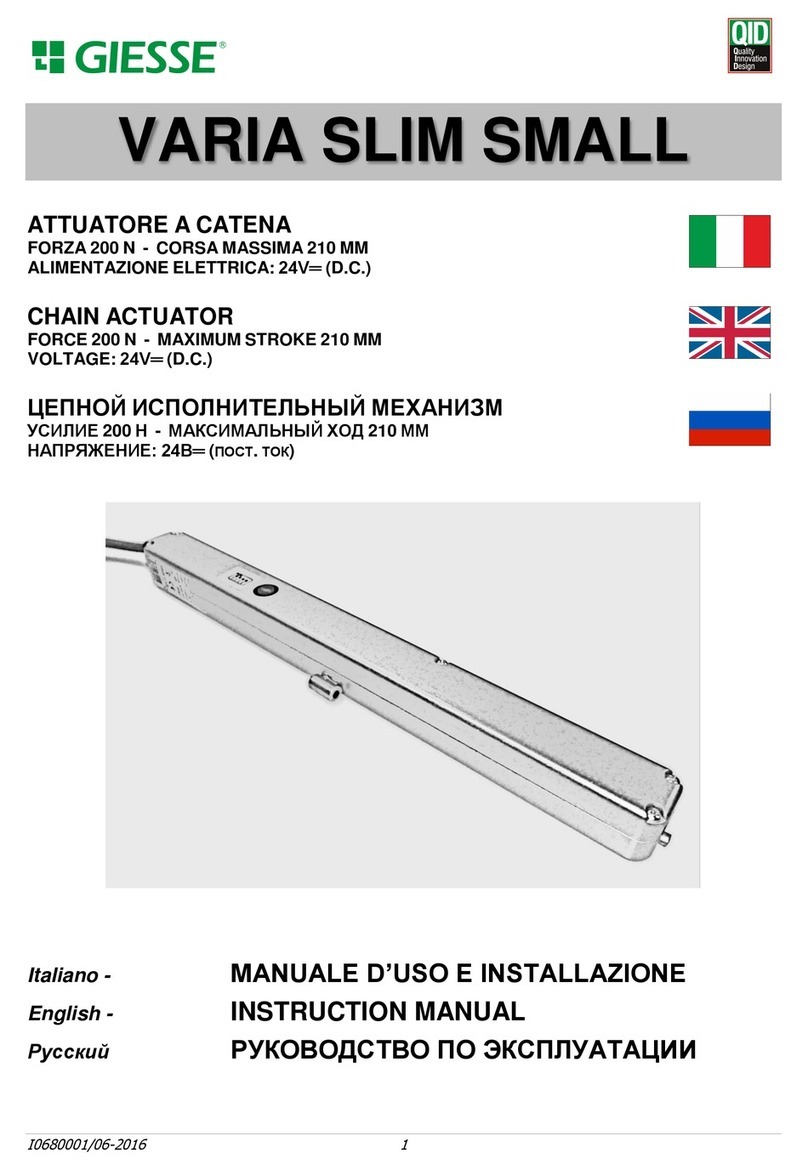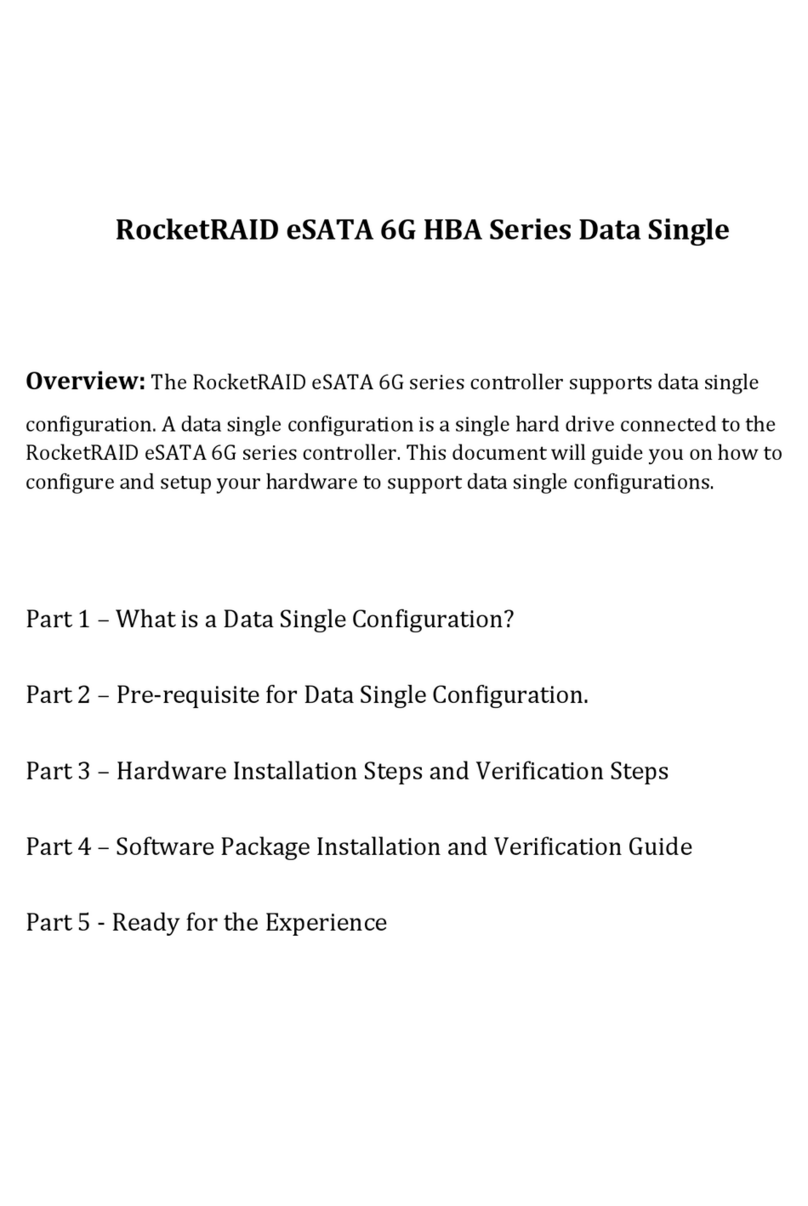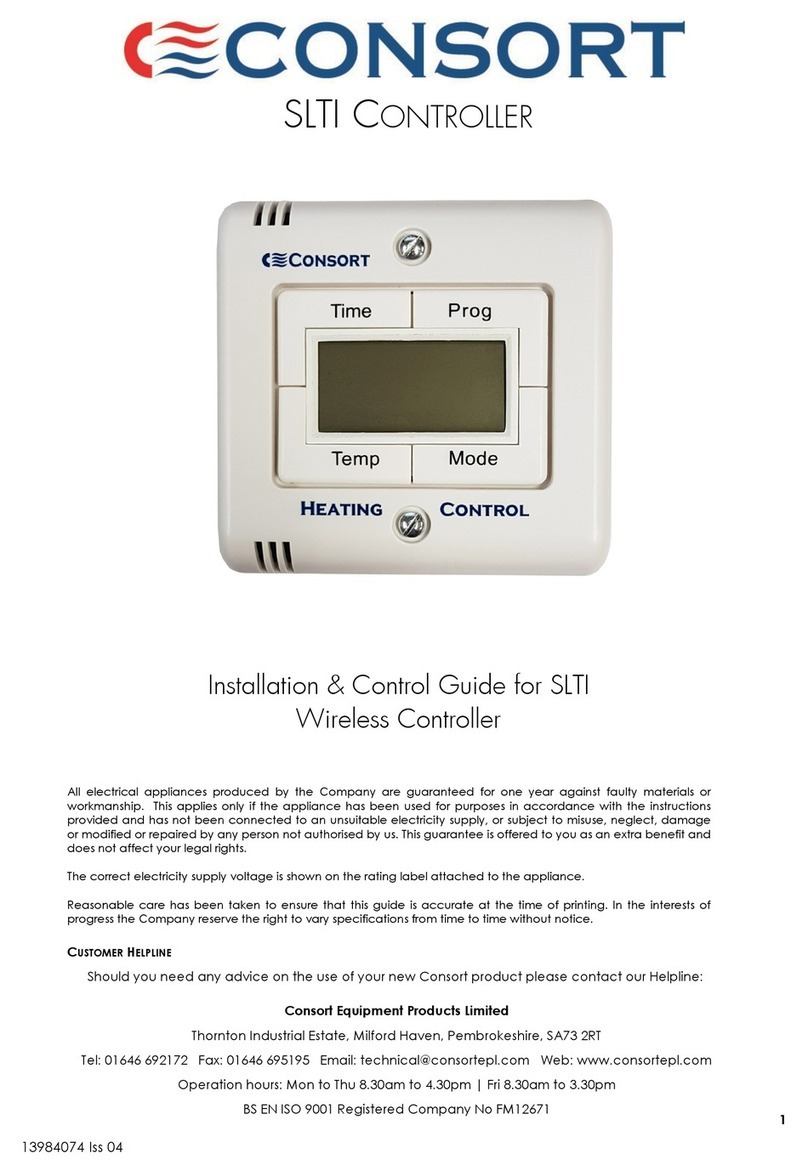Deif ASC User manual

DEIF A/S · Frisenborgvej 33 · DK-7800 Skive · Tel.: +45 9614 9614 · Fax: +45 9614 9615 · info@deif.com · www.deif.com
DEIF A/S · Frisenborgvej 33 · DK-7800 Skive · Tel.: +45 9614 9614 · Fax: +45 9614 9615 · info@deif.com · www.deif.com
DEIF A/S · Frisenborgvej 33 · DK-7800 Skive · Tel.: +45 9614 9614 · Fax: +45 9614 9615 · info@deif.com · www.deif.com
INSTALLATION INSTRUCTIONS
Automatic Sustainable Controller
ASC
● Mounting
● Board slot positions
● Terminal strip overview
● I/O lists
● Wiring
Document no.: 4189341076B
SW version: 4.05.x or later

1. General information
1.1. Warnings, legal information and safety.................................................................................................. 4
1.1.1. Warnings and notes ......................................................................................................................4
1.1.2. Legal information and disclaimer ..................................................................................................4
1.1.3. Safety issues ................................................................................................................................ 4
1.1.4. Electrostatic discharge awareness ............................................................................................... 4
1.1.5. Factory settings ............................................................................................................................ 5
1.2. About the installation instructions...........................................................................................................5
1.2.1. General purpose ...........................................................................................................................5
1.2.2. Intended users ..............................................................................................................................5
1.2.3. Contents and overall structure ......................................................................................................5
2. General product information
2.1. ASC product information........................................................................................................................ 6
2.2. Standard functions................................................................................................................................. 6
2.3. Standard and optional applications........................................................................................................ 7
2.4. Off-grid applications, power management..............................................................................................8
2.4.1. Off-grid applications, power management.....................................................................................8
2.5. Off-grid, stand-alone mode.....................................................................................................................8
2.6. Grid-tied applications, power management..........................................................................................10
2.6.1. Grid-tied applications, power management................................................................................. 10
2.7. Grid-tied, stand-alone........................................................................................................................... 11
2.7.1. Grid-tied, stand-alone.................................................................................................................. 11
2.8. Combination (off-grid + grid-tied), power management........................................................................12
2.8.1. Combination (off-grid + grid-tied), power management............................................................... 12
2.9. Combination (off-grid + grid-tied), stand-alone.....................................................................................13
2.9.1. Combination (off-grid + grid-tied), stand-alone............................................................................ 13
3. Mounting
3.1. ASC mounting and dimensions............................................................................................................ 14
3.1.1. Mounting of the unit..................................................................................................................... 14
3.1.2. Unit dimensions........................................................................................................................... 14
3.1.3. Panel cutout.................................................................................................................................15
3.1.4. Drilling template in mm (inches) ................................................................................................. 16
3.1.5. Mounting instructions...................................................................................................................16
3.1.6. Tightening torques....................................................................................................................... 16
4. Hardware
4.1. Board slot positions..............................................................................................................................18
4.2. Unit top side overview.......................................................................................................................... 19
4.2.1. Unit top side overview..................................................................................................................19
4.3. Terminal strip overview.........................................................................................................................19
4.4. Input/output lists................................................................................................................................... 22
4.4.1. Slot #1, power supply PCB..........................................................................................................23
4.4.2. Slot #2, serial communication (standard).................................................................................... 24
4.4.3. Slot #2, 7 digital inputs (option M13.2)........................................................................................ 24
4.4.4. Slot #2, relay outputs (option M14.2)...........................................................................................25
4.4.5. Slot #3, 13 binary inputs and 4 relay outputs (standard/M12)..................................................... 26
4.4.6. Slot #4, 7 digital inputs (option M13.4)........................................................................................ 27
4.4.7. Slot #4, relay outputs (option M14.4)...........................................................................................27
4.4.8. Slot #4, analogue outputs for inverter control or transducer signals (option E2).........................27
4.4.9. Slot #5, AC measuring.................................................................................................................28
4.4.10. Slot #6, 7 digital inputs (option M13.6)...................................................................................... 28
4.4.11. Slot #6, 4 relay outputs (option M14.6)...................................................................................... 29
4.4.12. Slot #6, 4 analogue inputs (option M15.6).................................................................................29
4.4.13. Slot #6, analogue outputs for transducer (option F1)................................................................ 29
4.4.14. Slot #7, I/O interface card (standard/M4)...................................................................................30
4.4.15. Slot #8, serial communication (option H2.8)..............................................................................31
ASC installation instructions 4189341076
UK
DEIF A/S Page 2 of 47

4.4.16. Slot #8, 7 digital inputs (option M13.8)...................................................................................... 31
4.4.17. Slot #8, 4 relay outputs (option M14.8)......................................................................................32
4.4.18. Slot #8, 4 analogue inputs (option M15.8).................................................................................32
5. Wirings
5.1. AC connections.................................................................................................................................... 33
5.1.1. Neutral line (N).............................................................................................................................33
5.1.2. Current transformer grounding.................................................................................................... 33
5.1.3. Fuses...........................................................................................................................................33
5.1.4. Breaker wiring..............................................................................................................................33
5.1.5. 3-phase wiring............................................................................................................................. 34
5.2. DC connections....................................................................................................................................34
5.2.1. Digital inputs................................................................................................................................ 34
5.2.2. Analogue inputs (option M15.X).................................................................................................. 35
5.2.3. External set points....................................................................................................................... 36
5.2.4. Multi-inputs (102, 105, 108).........................................................................................................36
5.2.5. Transistor outputs (open collector outputs)................................................................................. 38
5.3. Communication.................................................................................................................................... 39
5.3.1. CANbus....................................................................................................................................... 39
5.3.2. Modbus (option H2)..................................................................................................................... 40
5.3.3. Display cable (option J)............................................................................................................... 42
6. Technical information
6.1. Technical specifications, ASC.............................................................................................................. 43
ASC installation instructions 4189341076
UK
DEIF A/S Page 3 of 47

1. General information
1.1 Warnings, legal information and safety
1.1.1 Warnings and notes
Throughout this document, a number of warnings and notes with helpful user information will be presented.
To ensure that these are noticed, they will be highlighted as follows in order to separate them from the gener-
al text.
Warnings
Warnings indicate a potentially dangerous situation, which could result in death, personal in-
jury or damaged equipment, if certain guidelines are not followed.
Notes
Notes provide general information, which will be helpful for the reader to bear in mind.
1.1.2 Legal information and disclaimer
DEIF takes no responsibility for installation or operation of the generator set. If there is any doubt about how
to install or operate the engine/generator controlled by the Multi-line 2 unit, the company responsible for the
installation or the operation of the set must be contacted.
The Multi-line 2 unit is not to be opened by unauthorised personnel. If opened anyway, the war-
ranty will be lost.
Disclaimer
DEIF A/S reserves the right to change any of the contents of this document without prior notice.
The English version of this document always contains the most recent and up-to-date information about the
product. DEIF does not take responsibility for the accuracy of translations, and translations might not be up-
dated at the same time as the English document. If there is a discrepancy, the English version prevails.
1.1.3 Safety issues
Installing and operating the Multi-line 2 unit may imply work with dangerous currents and voltages. Therefore,
the installation should only be carried out by authorised personnel who understand the risks involved in work-
ing with live electrical equipment.
Be aware of the hazardous live currents and voltages. Do not touch any AC measurement in-
puts as this could lead to injury or death.
1.1.4 Electrostatic discharge awareness
Sufficient care must be taken to protect the terminal against static discharges during the installation. Once the
unit is installed and connected, these precautions are no longer necessary.
ASC installation instructions 4189341076
UK
General information
DEIF A/S Page 4 of 47

1.1.5 Factory settings
The Multi-line 2 unit is delivered from factory with certain factory settings. These are based on average values
and are not necessarily the correct settings for matching the engine/generator set in question. Precautions
must be taken to check the settings before running the engine/generator set.
1.2 About the installation instructions
1.2.1 General purpose
These Installation Instructions mainly include general product and hardware information, mounting instruc-
tions, terminal strip descriptions, I/O lists and wiring descriptions.
The general purpose of this document is to give the user important information to be used in the installation of
the unit.
Make sure to read this document before starting to work with the Multi-line 2 unit and the gen-
set to be controlled. Failure to do this could result in human injury or damage to the equip-
ment.
1.2.2 Intended users
These Installation Instructions are mainly intended for the person responsible for the design and installation.
In most cases, this would be a panel builder designer. Naturally, other users might also find useful information
in the document.
1.2.3 Contents and overall structure
This document is divided into chapters, and in order to make the structure simple and easy to use, each
chapter will begin from the top of a new page.
ASC installation instructions 4189341076
UK
General information
DEIF A/S Page 5 of 47

2. General product information
2.1 ASC product information
Introduction
The Automatic Sustainable Controller, ASC, is part of the DEIF Multi-line 2 product family. Multi-line 2 is a
complete range of multi-function inverter and generator protection and control products, which integrate all
the functions you need into one compact and attractive solution.
The concept of the ASC is to offer a cost-effective solution to EPCs and other parties in the solar energy field,
who need a flexible generator protection and control unit for medium to large PV applications. As the ASC is
part of the Multi-line product family, the standard functions can be supplemented with a variety of optional
functions.
Type of product
The Automatic Sustainable Controller, ASC, is a micro-processor-based control unit containing all necessary
functions for protection and control of an inverter.
It contains all necessary 3-phase measuring circuits, and all values and alarms are presented on the LCD
display, and the ASC offers TCP/IP communication for communication to various parties, for example SCADA
or HMI.
Options
The Multi-line 2 product range consists of different basic versions, which can be supplemented with the flexi-
ble options needed to provide the optimum solution. The options cover for example various protections for
inverter/generator, busbar and mains, voltage/var/PF control, various outputs, power management, serial
communication, additional operator display and so on.
2.2 Standard functions
Operation modes
Grid tied, off grid or in combination (grid tied and off grid), dependent on the conditions, the following modes
apply:
● Automatic Mains Failure
● Island operation
● Fixed power/base load
● Peak shaving
● Load takeover
● Mains power export
PV protection
● 5 x overload (32)
● 4 x over-current (50/51)
● 2 x over-voltage (59)
● 3 x under-voltage (27)
● 3 x over-/under-frequency (81)
● Multi-inputs (digital, 4 to 20 mA, 0 to 40 V DC, Pt100, Pt1000 or RMI)
● Digital inputs
Busbar protection (ANSI)
● 3 x over-voltage (59)
ASC installation instructions 4189341076
UK
General product information
DEIF A/S Page 6 of 47

● 4 x under-voltage (27)
● 3 x over-frequency (81)
● 4 x under-frequency (81)
Display
● Prepared for remote mounting
● Push-buttons for start and stop of the inverter
● Push-buttons for breaker operations
● Status texts
M-Logic
● Simple logic configuration tool
● Selectable input events
● Selectable output commands
2.3 Standard and optional applications
In the following sections, the standard and optional applications of the ASC will be presented, this includes
off-grid modes, grid-tied modes and combination modes, (off-grid combined with grid-tied possibilities (MB
open or closed).
ASC installation instructions 4189341076
UK
General product information
DEIF A/S Page 7 of 47

2.4 Off-grid applications, power management
2.4.1 Off-grid applications, power management
This application is using the CAN bus power management link between the DEIF controllers in the system.
Thereby it is not necessary to install additional hardwiring between the ASC and the gensets.
No. Setting in ASC Setting
6071 Operating mode Selection Power management
No. Setting in AGC Setting
6071 Operating mode Selection Power management
2.5 Off-grid, stand-alone mode
This application is used if the gensets already have a control system on top of them (referred to as “Control-
ler” in the picture).
The ASC needs inputs from the GB positions (closed) and the produced active and reactive power, represen-
ted by analogue 4 to 20 mA signals.
ASC installation instructions 4189341076
UK
General product information
DEIF A/S Page 8 of 47

No. Setting in ASC Setting
6071 Operating mode Island operation Island operation
ASC installation instructions 4189341076
UK
General product information
DEIF A/S Page 9 of 47

2.6 Grid-tied applications, power management
2.6.1 Grid-tied applications, power management
This application is using the CAN bus power management link between the DEIF controllers in the system.
Thereby it is not necessary to install additional hardwiring between the ASC and the gensets.
No. Setting in ASC Setting
6071 Operating mode Selection Power management
No. Setting in AGC mains Setting
6071 Plant mode Selection Select plant mode
ASC installation instructions 4189341076
UK
General product information
DEIF A/S Page 10 of 47

2.7 Grid-tied, stand-alone
2.7.1 Grid-tied, stand-alone
This application is used if no AGC mains is installed to facilitate the power management parallel to mains
functions. The ASC needs inputs from the MB positions (open/closed) and the produced active/reactive pow-
er from the mains incomer or outgoing. This is represented by analogue 4 to 20 mA signals.
No. Setting Setting
6071 Operating mode Selection Select plant mode
ASC installation instructions 4189341076
UK
General product information
DEIF A/S Page 11 of 47

2.8 Combination (off-grid + grid-tied), power management
2.8.1 Combination (off-grid + grid-tied), power management
This application is used when the application has to be available in grid-tied modes as well as off-grid (islan-
ded modes). In this example, the CAN bus link is wired between the AGC mains, AGC gensets and the ASC.
It is not necessary to introduce other additional measurements or hardwiring since all necessary data is avail-
able on the CAN bus for power management.
No. Setting in ASC Setting
6071 Operating mode Selection Power management
No. Setting in AGC gensets Setting
6071 Plant mode Selection Power management
No. Setting in AGC mains Setting
6071 Plant mode Selection As required
ASC installation instructions 4189341076
UK
General product information
DEIF A/S Page 12 of 47

2.9 Combination (off-grid + grid-tied), stand-alone
2.9.1 Combination (off-grid + grid-tied), stand-alone
This application is used when the application has to be available in grid-tied modes as well as off-grid (islan-
ded modes). In this example, third party controllers are installed (referred to as “Controller” in the picture) and
therefore it is necessary to hardwire signals from the breaker positions (GBs and MB) and measure the mains
power and reactive power, the summated genset power and the summated genset re-active power.
No. Setting in ASC Setting
6071 Operating mode Selection Select mode
ASC installation instructions 4189341076
UK
General product information
DEIF A/S Page 13 of 47

3. Mounting
3.1 ASC mounting and dimensions
3.1.1 Mounting of the unit
The unit is designed for mounting inside the panel. The display can be installed on the panel door and con-
nected to the main unit with a display cable.
3.1.2 Unit dimensions
Display or AOP
20.0 (0.787)
230 (9.055)
215(8.465)
115 (4.528)
15 (0.59)
165 (6.486)
115 (4.528)
144 (5.669)
220 (8.661)
115 (4.528)
119(4.689)
Dimensions are given in mm (inches).
ASC installation instructions 4189341076
UK
Mounting
DEIF A/S Page 14 of 47

3.1.3 Panel cutout
In order to ensure optimum mounting, the panel door must be cut out according to the panel cutout illustra-
tion.
Required space 222X115mm
Gasket outer 186X77mm
Screws for fastning:
3.5mm selfcutting threads
max. depth in display 9 mm
26.0
= =
==
50.5
66.0
26.0
61.0
174.0
15.0
41.0
Dimensions are given in mm.
ASC installation instructions 4189341076
UK
Mounting
DEIF A/S Page 15 of 47

3.1.4 Drilling template in mm (inches)
230.0 (9.055)
119.1 (4.689)
6.6 (0.260)
112.6 (4.433)
215.5 (8.484)
114.9 (4.524)
14.3 (0.563)
3.1.5 Mounting instructions
The unit can be mounted in two different ways:
1. Directly mounted on a DIN rail.
2. Fastened with screws to the rear side of the cabinet. Six screw holes are available for this mounting
method.
DEIF recommends using the screw hole fastening.
3.1.6 Tightening torques
Controller unit: 1.5 Nm for the six M4 screws (countersunk screws are not to be used)
Plug connections (terminals): 0.5 Nm, 4.4 lb-in
AOP-1 and AOP-2 (see diagram below)
Panel door mounting: 0.7 Nm, 6.2 lb-in
Sub-D screw: 0.2 Nm, 1.8 lb-in
DC-DC converter terminals: 0.5 Nm, 4.4 lb-in
ASC installation instructions 4189341076
UK
Mounting
DEIF A/S Page 16 of 47

220.0 (8.661)
115.0 (4.528)
Display
20.0 (0.787)
0.7 Nm
Screw M3
Bossard BN5687
or similar
0.2 Nm
9P Female
Sub 0
connector
Max. 10 mm
Min. 6 mm
ASC installation instructions 4189341076
UK
Mounting
DEIF A/S Page 17 of 47

4. Hardware
4.1 Board slot positions
The unit housing is divided into board slot positions. This means that the unit consists of a number of printed
circuit boards (PCBs) mounted in numbered slots. The green terminal blocks are then mounted in the PCBs.
Some of these board slots are standard and some are intended for options. The board slot positions are ar-
ranged as illustrated below.
Slot type Option Slot #1 Slot #3 Slot #5 Slot #7
Terminals 1 to 28 37 to 64 73 to 89 98 to 125
Power supply Standard X
AC measure-
ments
Standard X
Interface ASC PM:
Standard
ASC-4: M4
X
Power man-
agement
Standard X
I/O extension ASC PM:
Standard
ASC-4: M12
X
Slot type Option Slot #2 Slot #4 Slot #6 Slot #8
Terminals 29 to 34 65 to 72 90 to 97 126 to 133
Analogue con-
troller outputs
E2 X
Analogue
transducer out-
puts
F1 X
Relay outputs M14.4 X
Serial commu-
nication
H2.2 (standard) X
Serial commu-
nication
H2.8 X
I/O extension
cards
M13.2/M14.2 X
I/O extension
cards
M13.6/M14.6/
M15.6
X
I/O extension
cards
M13.8/M14.8/
M15.8
X
Only hardware options, which will affect the hardware of the unit, are represented in the table.
The software options will be seen through the PC utility software. The software options that are
not represented in the above table can be found in the data sheet.
ASC installation instructions 4189341076
UK
Hardware
DEIF A/S Page 18 of 47

4.2 Unit top side overview
4.2.1 Unit top side overview
An overview of the terminals is presented below. The slot positions are as follows:
Ethernet
787776757473 96 979594929190 93
89888785 8683 8482818079
727169 70686765 66
62 6359 60 615856 575553 54 645251504947464443 45 4841403837 39 42
Service port Display
Ethernet
CAN B
CAN A
Power
Self check ok
Alarm inhibit
1
4
9
56
3
7 8
2
1
:The numbers in the drawing above refer to the slot numbers indicated in the table below.
No. Slot
1 #1, terminal 1-28, power supply (standard)
2 #2, terminal 29-36, communication (standard)
3 #3, terminal 37-64, inputs/outputs (standard/M12)
4 #4, terminal 65-72, inputs/outputs
5 #5, terminal 73-89, AC measuring (standard)
6 #6, terminal 90-97, inputs/outputs
7 #7, terminal 98-125, inputs/outputs and PM CAN (standard/M4)
8 #8, terminal 126-133, communication and I/O extensions
9 LED I/F
4.3 Terminal strip overview
Standard overview
ASC installation instructions 4189341076
UK
Hardware
DEIF A/S Page 19 of 47

ASC installation instructions 4189341076
UK
Hardware
DEIF A/S Page 20 of 47
Table of contents
Other Deif Controllers manuals
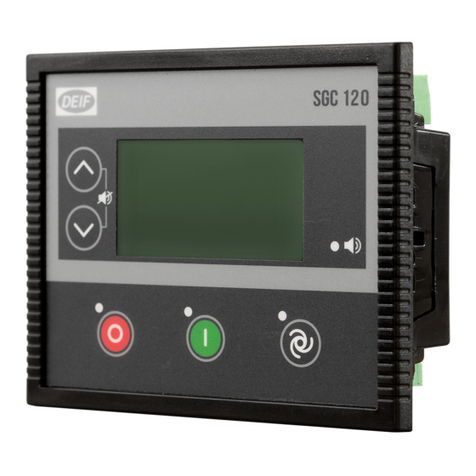
Deif
Deif SGC 120 User manual
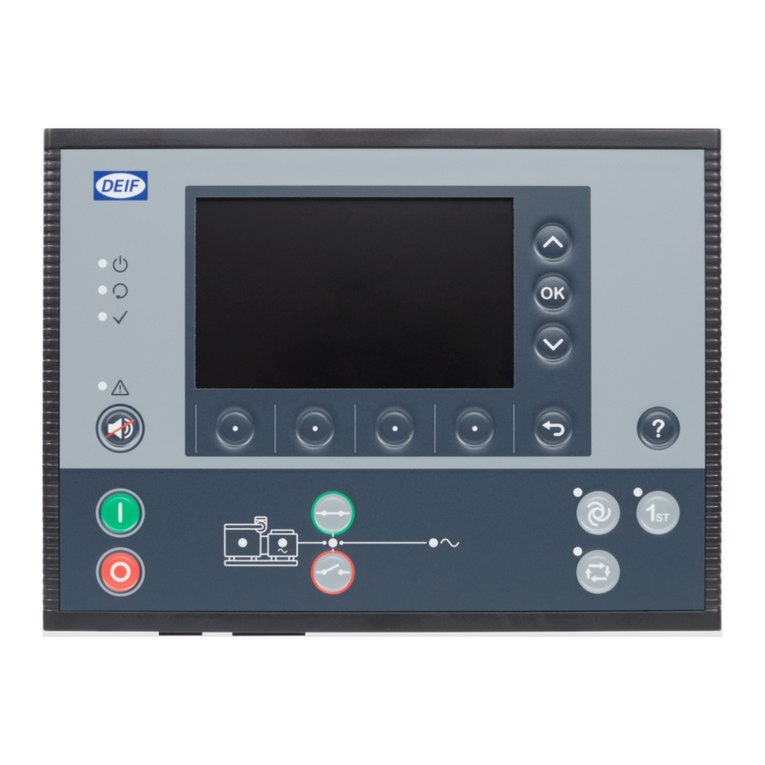
Deif
Deif PPM 300 User manual
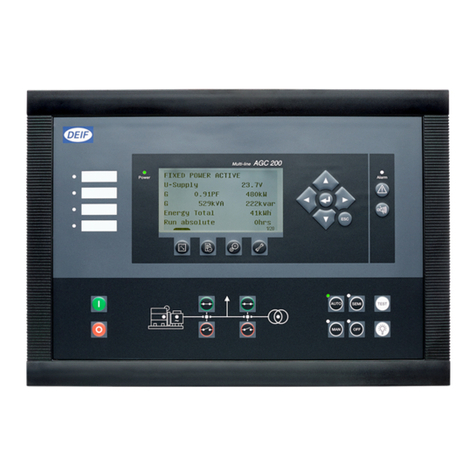
Deif
Deif AGC 200 Series User manual

Deif
Deif AGC 200 Series User manual

Deif
Deif DVC 310 Installation and operation manual
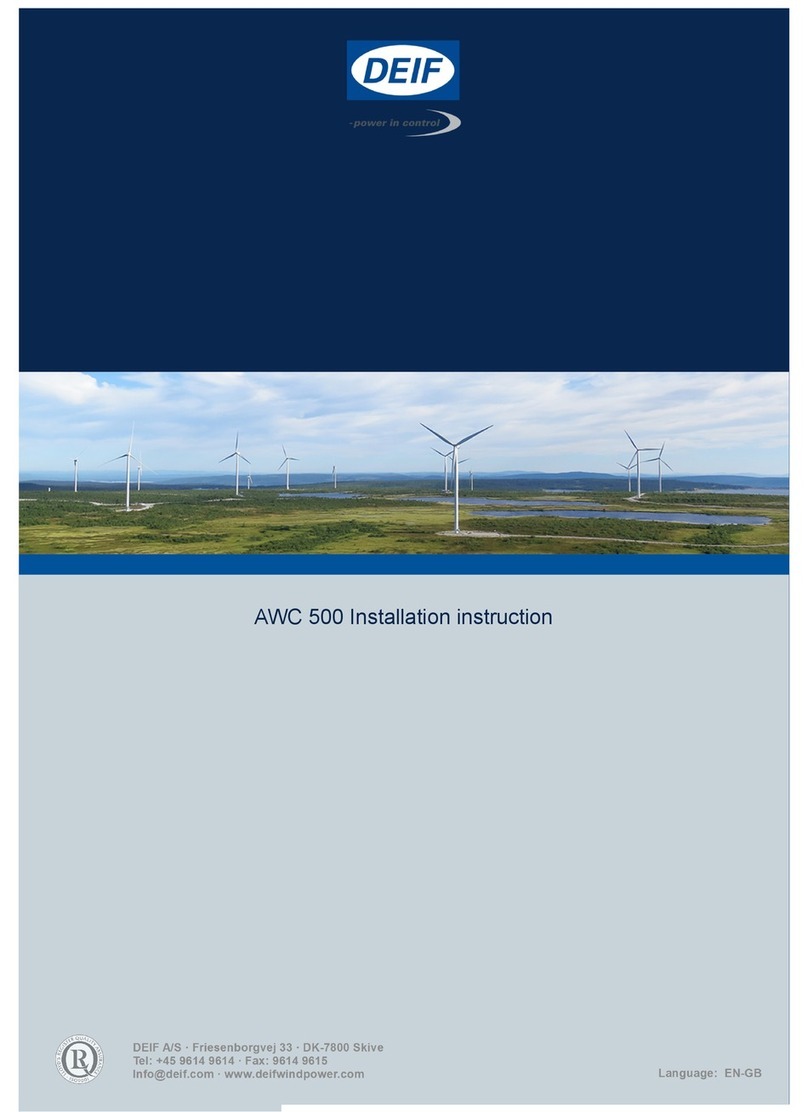
Deif
Deif AWC 500 User manual
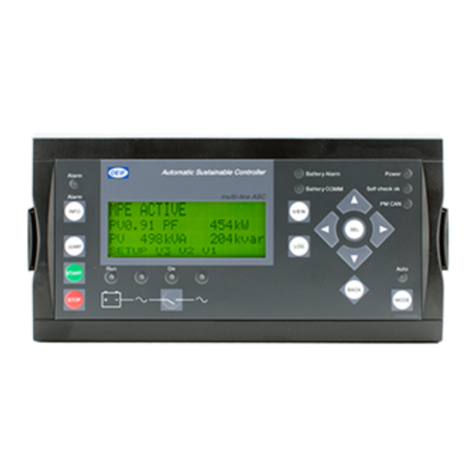
Deif
Deif ASC-4 Instruction Manual
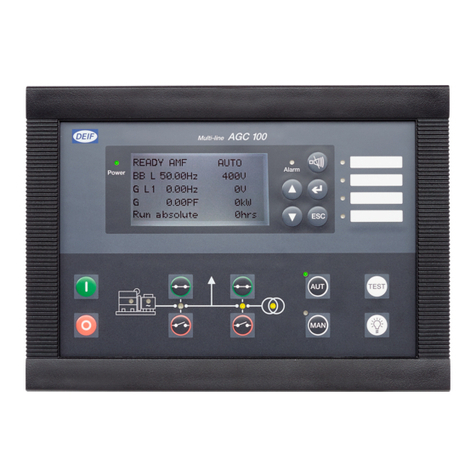
Deif
Deif AGC 100 User manual
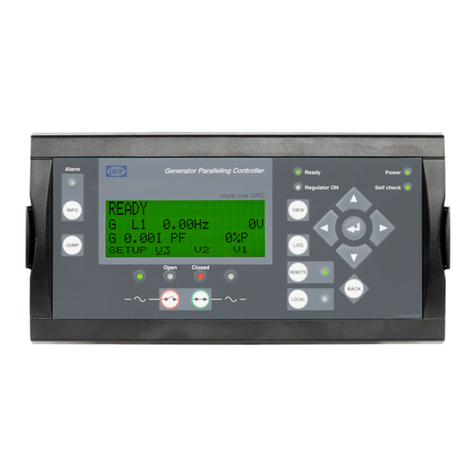
Deif
Deif GPC-3 Hydro User manual
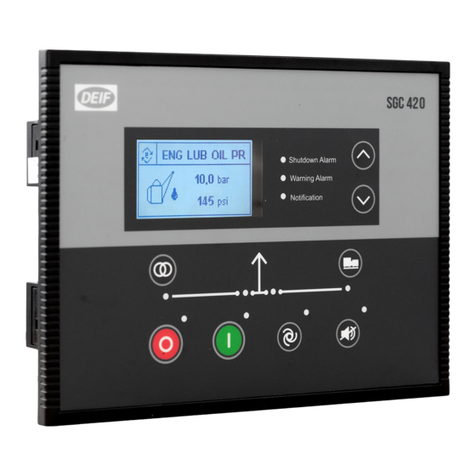
Deif
Deif SGC 420 User manual
Popular Controllers manuals by other brands

Honeywell
Honeywell S9200U1000 installation instructions
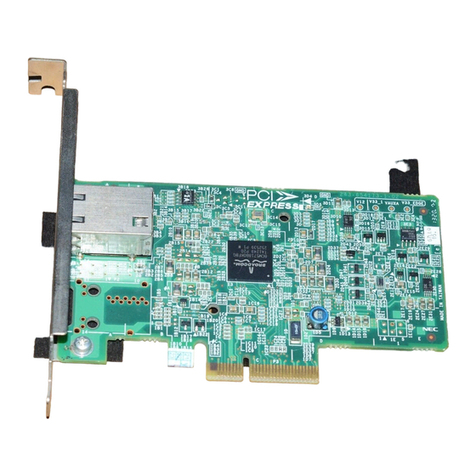
Broadcom
Broadcom NetXtreme/NetLink BCM5718 Series Programmer's guide

Eltako electronics
Eltako electronics FSB71-230V manual
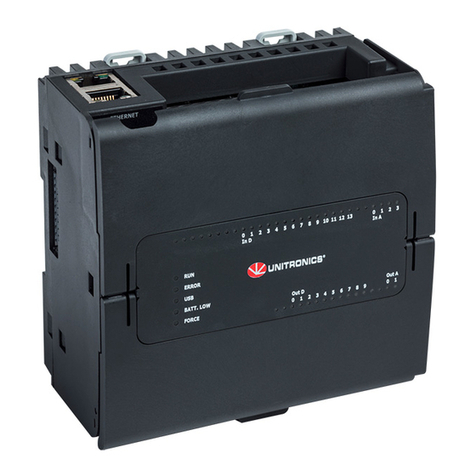
Unitronics
Unitronics UniStream USC-B10-RA28 installation guide
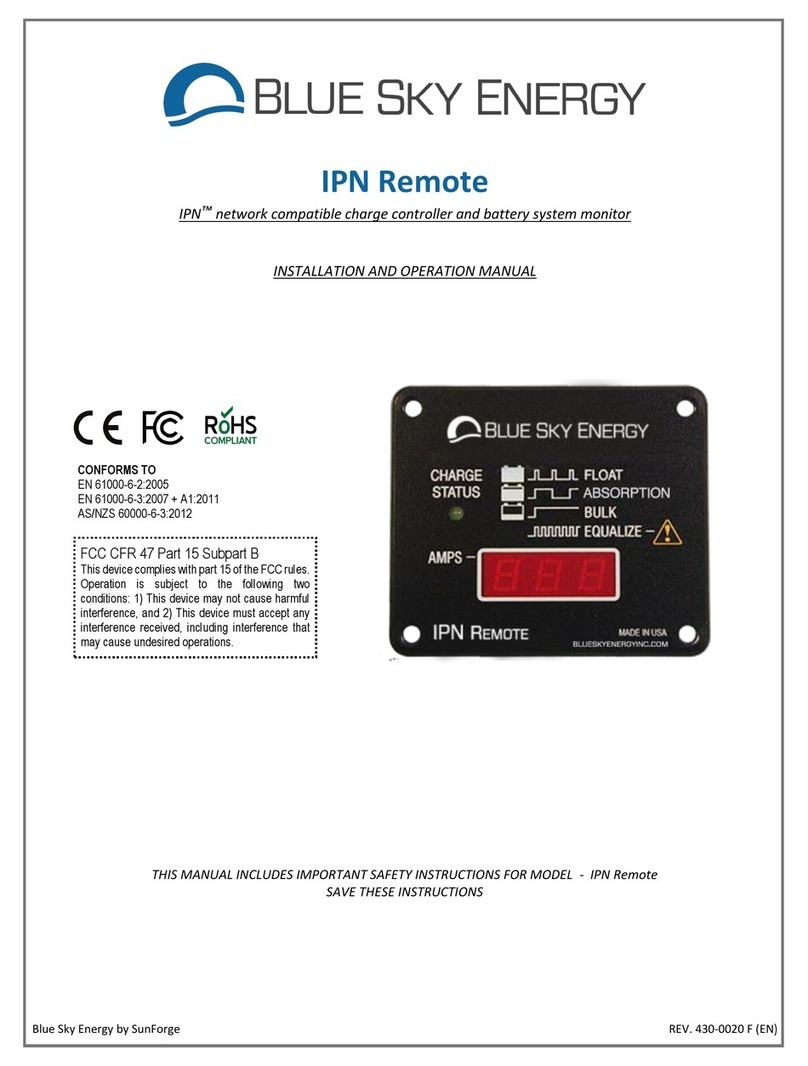
Blue Sky Energy
Blue Sky Energy IPN Remote Installation and operation manual
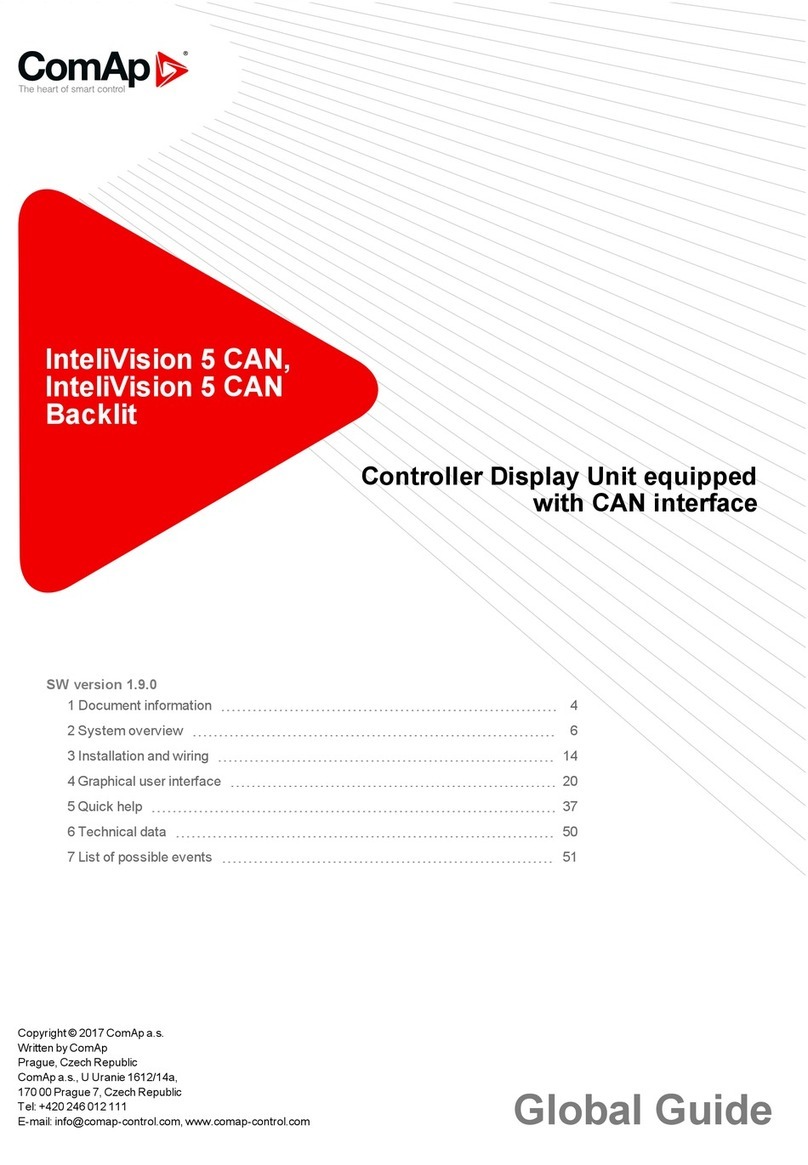
ComAp
ComAp InteliVision 5 CAN Global Guide
